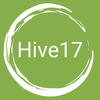|
About a year ago, I was introduced to the term 'antifragility' - a new word that intends to describe the opposite of being fragile. This term is about going beyond robustness and resilience - we want to thrive in chaos, not only survive.
Nassim Taleb introduced the term antifragility with his book "Antifragile: Things that Gain from Disorder". Today, I want to take a quote from the book and explain some simple principles how we can deal with difficult, complex ecosystems and how we can establish new behaviours that make us successful in a substantial way - no shortcuts. "Antifragility (thanks to the asymmetry effects of trial and error) supersedes intelligence. But some intelligence is needed." What does Taleb mean by that? In the book, he introduces the concept of optionality. If we have different options and we choose options that have a small, limited downside plus a big, unlimited upside, then we will over time be more successful. Randomness (as it appears in complex environments) will drive us towards the upside. Eventual losses will be small. Interestingly, identifying and creating these options doesn't take a lot of intelligence - it's more about courage. Where we need intelligence is in choosing the right options. And this is much easier than designing the perfect path (option) with intelligence. Where do these options come from? I suggest two sources. First, when we do our business and are observing our customers, we will automatically discover possible ways to improve the value for customers. Simple shadowing, conversations and immersion will surface new things we can try. This leads me to point two: experimentation. Exploring small changes how we deliver our value to customers will create observations and will lead to more options. Small steps will lead eventually to more value and more success. The small steps also avoid to fail big and jeopardise our business. How can we be intelligent in choosing the right options? There we need direction and a yardstick; base again two sources. First is customer value - again; when we do understand what our customers appreciate, what is important to them, then we collect one part of our northstar. The second source to decide on the right options is our shared vision, our purpose. This gives us meaning and a clear measure on what we want to achieve, what upside means to use, and which option will be the right one for us. The purpose also includes the collective experience on how to be successful in the ecosystem we are running our business. One last element I would like to mention here. In our business world today, we can observe a lot of transactional behaviour; we try to model each process, find causality and theoretical explanations. The randomness mentioned by Taleb also indicates that we should rely less on these transactional, theoretical approaches. When we are connecting with people in a more human-centric way, it will be easier for us to experiment, build our collective dream, interact with customers and better understand the ecosystem we are in. How do you experience fragility in your work? What works for you to overcome these stressors? Photo credit: Leiduowen
0 Comments
Leave a Reply. |
Subscribe
Receive our monthly themed summaries of our thoughts: click! TimTim is a change practitioner in the area of innovation and excellence. He is working with teams to accelerate innovation, collaboration and agility. Categories
All
Archives
July 2024
|


 RSS Feed
RSS Feed